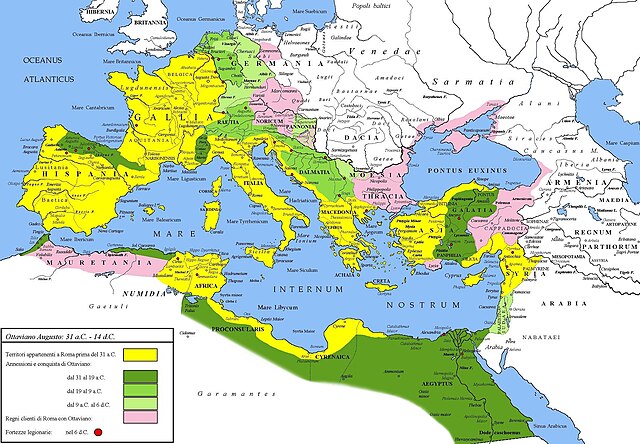For centuries, historians imagined the Roman Empire as a largely homogeneous society, with a population rooted in the Italian peninsula. But groundbreaking DNA studies are now shattering that myth, revealing a genetic tapestry as diverse as the empire itself—one shaped by migration, enslavement, and cultural exchange.

By Cristiano64 – Lavoro proprio, self-made, CC BY-SA 3.0, https://commons.wikimedia.org/w/index.php?curid=2452303
A Genetic Crossroads in the Heart of Rome
In 2019, a landmark study in Science led by researchers like Dr. Margaret Antonio analyzed the genomes of 127 individuals buried in Rome and nearby regions from the Stone Age to the Middle Ages. The results were startling: during the empire’s peak (27 BCE–300 CE), fewer than 30% of Rome’s inhabitants had genetic ties to early Italian ancestors. The rest traced their roots to the Eastern Mediterranean, North Africa, and the Near East. Enslaved people, soldiers, traders, and migrants from provinces as far as Syria and Egypt had reshaped the city’s DNA, turning it into what Antonio calls “the ancient world’s first melting pot.”
Empire-Wide Diversity: From Britain to Turkey
A 2023 Smithsonian Magazine article expanded on these findings, examining remains across the empire. In Britain, skeletons from the Roman period show North African and Middle Eastern ancestry, likely from soldiers stationed at Hadrian’s Wall. In Turkey, DNA from a 2nd-century burial site near Ephesus reveals links to Sudan and the Arabian Peninsula—evidence of the empire’s sprawling trade networks. Even rural areas, once thought to be genetically isolated, show mixing between local populations and newcomers.
Why Migration Mattered
The Roman Empire relied on constant movement. Enslaved people, forcibly relocated from conquered territories, made up an estimated 10–20% of the population. Meanwhile, voluntary migrants flocked to cities for work, as noted in Roman urbanization. The military also played a role: soldiers from Gaul (France) or the Balkans often settled far from home, as detailed in the Roman army’s structure. Over generations, these groups intermarried, creating a blended population that challenges modern notions of “Roman” identity.
The Legacy of Empire—And Its Collapse
After the Western Empire fell in 476 CE, Rome’s genetic diversity plummeted. The Science study found that medieval Romans once again resembled their Iron Age ancestors, as trade routes dissolved and migration slowed. This shift underscores how the empire’s political unity enabled genetic mixing—a diversity that fragmented alongside its borders.
Why This Matters
These findings do more than rewrite history books—they redefine how we view ancient identity. Romans weren’t defined by DNA but by shared citizenship, laws, and culture, as explored in Roman citizenship. The empire’s genetic legacy also mirrors modern debates about migration and belonging, proving that human movement has always shaped societies.
For deeper context, explore how Roman slavery fueled this diversity, or how trade networks connected distant regions. The data also aligns with studies of Roman religion, which absorbed gods and traditions from across the Mediterranean.
A New Chapter for Roman History
DNA doesn’t just trace ancestry—it tells stories of resilience, exploitation, and coexistence. As researchers analyze more remains, we’ll gain an even clearer picture of the ordinary people who lived, loved, and labored under the banner of Rome. Their genetic legacy reminds us that empires are built not just on conquest, but on the lives of millions whose histories are still written in our bones.
